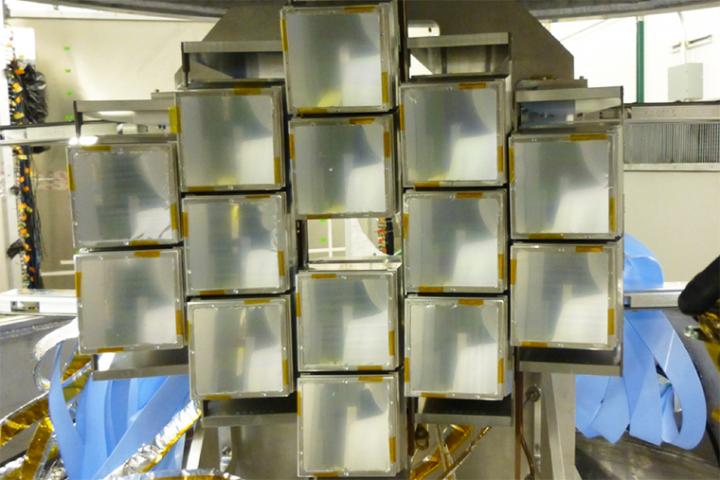
Credit: Image courtesy Michigan State University
Researchers at Washington University in St. Louis have discovered and characterized a new form of oxygen dubbed “featherweight oxygen” — the lightest-ever version of the familiar chemical element oxygen, with only three neutrons to its eight protons.
Oxygen is one of the most abundant elements in the solar system, but oxygen-11 can be produced only in a laboratory. It decays immediately after its creation by emitting two protons, and it can be observed solely through detection of its decay products. Two-proton decay is the most recently discovered nuclear decay channel.
“What is most interesting to the nuclear physics community, however, is that oxygen-11 is the nuclear mirror of lithium-11, a very well-studied heavy isotope of lithium,” said Tyler Webb, a PhD candidate in physics in Arts & Sciences at Washington University, who works with Robert J. Charity, research professor of chemistry in Arts & Sciences, and Lee G. Sobotka, professor of chemistry and of physics. Webb is the first author of a new paper on the discovery in Physical Review Letters.
In nuclear physics, nuclei are said to be mirrors when one has a certain number of neutrons and protons and the other has a reversed amount, such as the 3:8 ratio of neutrons to protons in oxygen-11 as compared to the 8:3 ratio in lithium-11.
“When talking about mirror nuclei, we expect a sort of symmetry to hold,” Webb said. “The properties of a nucleus and its mirror should be similar: Quantum states should be roughly close in energy relative to the nucleus’s ground state and the wave functions of those states should be similar.”
This symmetry can be stretched or broken, however. Scientists can compare the actual structure of mirror nuclei against their expected structure to learn more about this important symmetry of atomic nuclei, the stuff that composes the visible matter of the universe.
In this case, the researchers are most excited to compare lithium-11, which they know has two very loosely bound neutrons in a “halo” orbiting its core, to oxygen-11, which has two unbound protons.
The Washington University researchers pieced together evidence of oxygen-11 in an experiment conducted at the National Superconducting Cyclotron Laboratory on the campus of Michigan State University. The Physical Review Letters paper outlines both the experiment and the supporting calculations conducted by theoretical nuclear physicists Witold “Witek” Nazarewicz and Simin Wang of Michigan State University. Researchers from University of Connecticut and Western Michigan University also participated in the collaboration.
###
Media Contact
Talia Ogliore
[email protected]
Original Source
https:/
Related Journal Article
http://dx.




